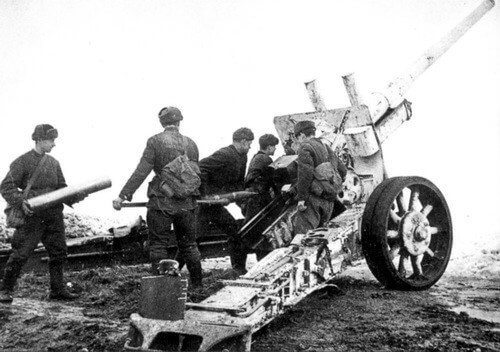
| Year | 1935 |
| Weapon Type | Heavy Gun |
| Origin & Designer | Russia/Barrikady |
| Numbers Produced | 500 |
| Crew | 9 |
| Calibre | 121.92mm (122x785R) |
| Elevation | -2° to +45° |
| Traverse | 56° |
| Breech | Interrupted Screw |
| Recoil | Hydropneumatic |
| Gun Sight | [@gun_sight] |
| Gun Mount | [@gun_mounts] |
| Carriage | Split Trail |
| Trailers | [@trailers] |
| Gun Shield | 3.5mm |
| Armoured Plate | [@armoured_plate] |
| Barrel Length | 5.650mm (L/46.3) |
| Overall Length | 8.90m |
| Width | 2.34m |
| Height | 1.99m |
| Weight | Weight in Traction: 7.800 kg Weight in Action: 7.100 kg |
| Round Weight | HE: 25.0 kg AP: 25.0 kg |
| Muzzle Velocity | HE: 800 m/s 800 m/s |
| Feed | [@feed] |
| Magazine Capacity | [@magazine_capacity] |
| Practical Rate of Fire | [@practical_rate_of_fire] |
| Rate of Fire | 3-4 r.p.m. |
| Maximum Rate of Fire | [@maximum_rate_of_fire] |
| Maximum Ceiling | [@maximum_ceiling] |
| Maximum Ground Range | [@maximum_ground_range] |
| Maximum Range | 19.800m |
| Armour Penetration | 125mm @ 500m @ 30° |
| Traction | Motorised |
| Variants | [@variants] |
| Notes | The 122mm A-19 gun was a new design and was produced from 1935 to 1939. It was the first Russian gun to be designed with a split trail and modern carriage, these allowed for greater elevation and wider traverse. It did have some problems and these were mainly with the carriage. It was also found that the elevation system was slow. It was issued to corps artillery regiments and saw action against the Japanese and Finns, and served right through world war two. |